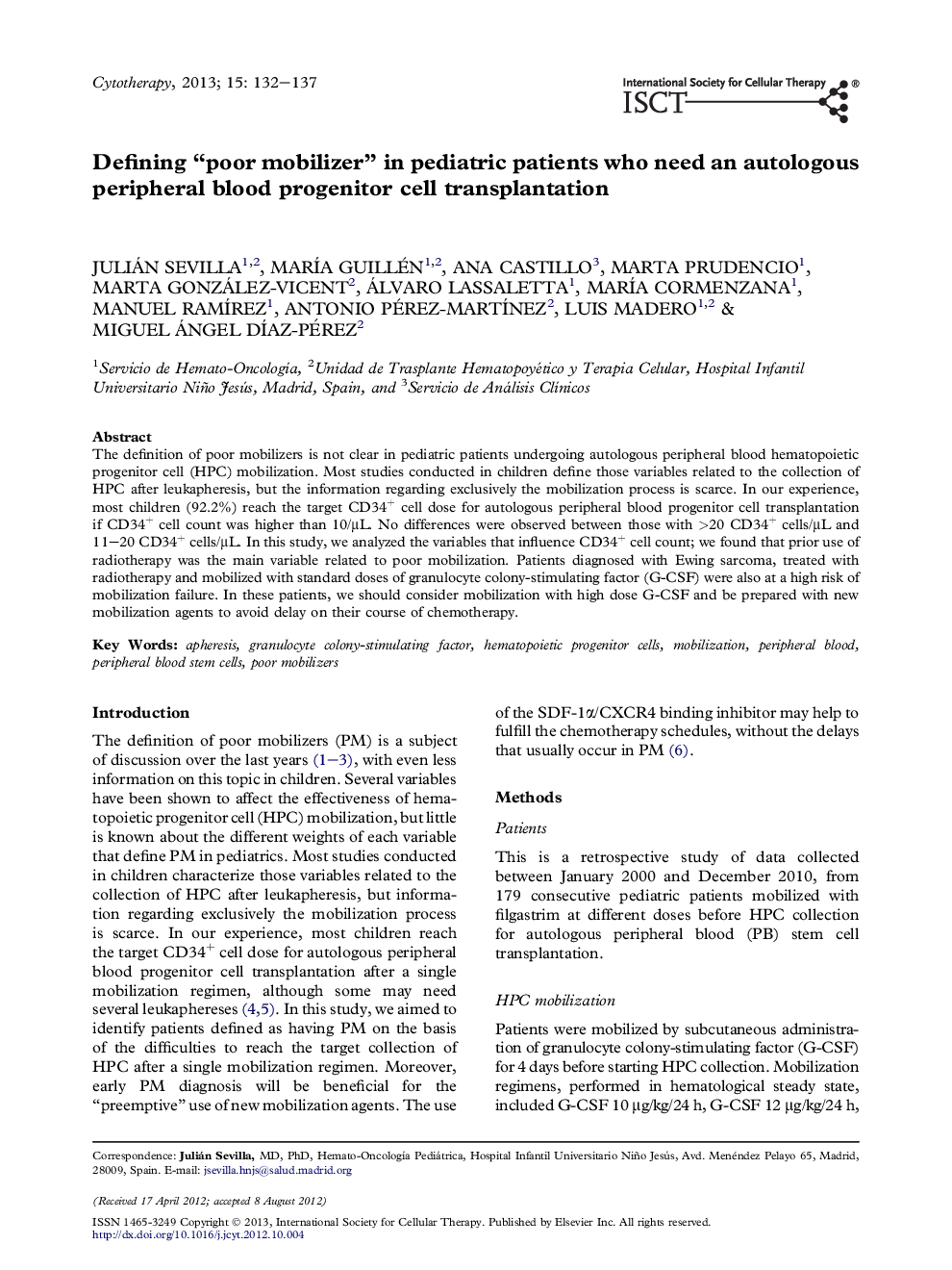| کد مقاله | کد نشریه | سال انتشار | مقاله انگلیسی | نسخه تمام متن |
|---|---|---|---|---|
| 10930779 | 1093568 | 2013 | 6 صفحه PDF | دانلود رایگان |
عنوان انگلیسی مقاله ISI
Defining “poor mobilizer” in pediatric patients who need an autologous peripheral blood progenitor cell transplantation
دانلود مقاله + سفارش ترجمه
دانلود مقاله ISI انگلیسی
رایگان برای ایرانیان
کلمات کلیدی
موضوعات مرتبط
علوم زیستی و بیوفناوری
بیوشیمی، ژنتیک و زیست شناسی مولکولی
بیولوژی سلول
پیش نمایش صفحه اول مقاله

چکیده انگلیسی
The definition of poor mobilizers is not clear in pediatric patients undergoing autologous peripheral blood hematopoietic progenitor cell (HPC) mobilization. Most studies conducted in children define those variables related to the collection of HPC after leukapheresis, but the information regarding exclusively the mobilization process is scarce. In our experience, most children (92.2%) reach the target CD34+ cell dose for autologous peripheral blood progenitor cell transplantation if CD34+ cell count was higher than 10/μL. No differences were observed between those with >20 CD34+ cells/μL and 11-20 CD34+ cells/μL. In this study, we analyzed the variables that influence CD34+ cell count; we found that prior use of radiotherapy was the main variable related to poor mobilization. Patients diagnosed with Ewing sarcoma, treated with radiotherapy and mobilized with standard doses of granulocyte colony-stimulating factor (G-CSF) were also at a high risk of mobilization failure. In these patients, we should consider mobilization with high dose G-CSF and be prepared with new mobilization agents to avoid delay on their course of chemotherapy.
ناشر
Database: Elsevier - ScienceDirect (ساینس دایرکت)
Journal: Cytotherapy - Volume 15, Issue 1, January 2013, Pages 132-137
Journal: Cytotherapy - Volume 15, Issue 1, January 2013, Pages 132-137
نویسندگان
Julián Sevilla, MarÃa Guillén, Ana Castillo, Marta Prudencio, Marta González-Vicent, Álvaro Lassaletta, MarÃa Cormenzana, Manuel RamÃrez, Antonio Pérez-MartÃnez, Luis Madero, Miguel Ángel DÃaz-Pérez,